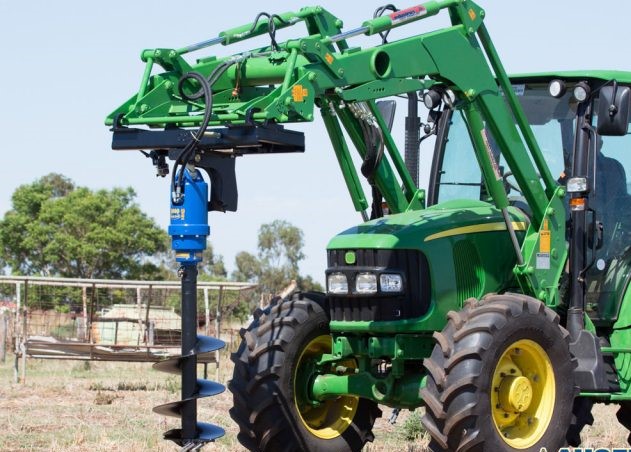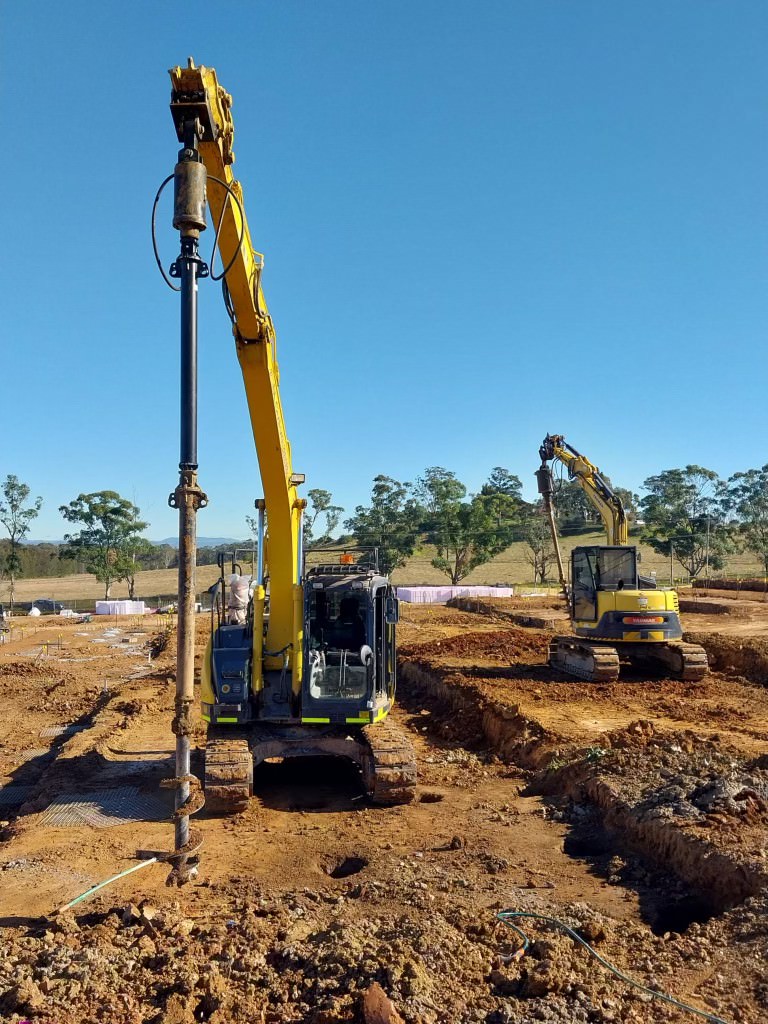
If you’re an excavator operator, you know that a job needs to be done right the first time. You’ve got a lot of pressure on your shoulders to get the job done quickly and efficiently with no mistakes. One thing that can help ensure this is using the right excavator auger attachment. Using an auger can make your job easier because drilling holes in concrete, gravel, or rock becomes much simpler than traditional methods like shovelling or manual pneumatic drills. Here’s what you need to know about excavator auger attachments.
Why use an excavator auger?
An excavator auger is used to dig holes. It can also be used to remove debris and soil and break up hard ground. This tool allows you to quickly dig a hole in any location where you need it. The auger attachment is simply connected to your excavator, and you can get to work.
Importantly, augers are versatile enough to make holes in different types of terrain, such as dirt, sand or rock. However, you need the right auger for the job, or it will be ineffective and potentially very costly to your equipment.
Different types of excavator augers
Excavator augers are used to drill through different types of material. They come in a variety of shapes and sizes, but there are three main types which we’ll discuss below.
Tungsten augers
Tungsten augers are used to drill through hard rock and concrete. They are the most common type of auger, as they can be used in a wide variety of applications. Tungsten is a very hard metal, making it ideal for drilling through tough materials like shale or granite. However, tungsten is also very expensive, meaning you would only purchase a tungsten auger if you really needed it for hard surfaces.
Because these tools are designed for hard materials only, they should not be used on softer terrains such as sand or clay. This can burn out the excavator’s motor through overheating and friction caused by the auger spinning against loose material.
Rock combo augers
Rock combo augers have both a rock-cutting tip and tungsten carbide teeth that can be used together or independently, depending on the job. They’re designed to cut through a variety of materials, including rock and concrete. They differ from tungsten augers in that they have two different blades, one each for cutting rock and steel rebar.
The blades can be easily changed out for different materials, but this does take time. If you need to dig holes in a variety of surfaces, you may be better with a specialist or customised tool.
Dedicated rock augers
Dedicated rock augers have only one type of cutting tip and are typically used for harder surfaces such as granite or limestone. You can choose the type of tip, usually either tungsten carbide teeth or diamond blades.
The dedicated rock auger is designed for use in rock, concrete and asphalt. It has a high torque rating and a large diameter bit to help you get through tough materials. As such, they are very heavy-duty and can handle those tough drilling jobs.
Auger extensions

While not technically an auger, many people find they need auger extensions to dig deeper holes. They’re also useful for reaching difficult places. There are two types of extensions, fixed length and telescoping. Fixed-length augers have a set length and can’t be adjusted, while telescoping ones come with adjustable sections that allow you to increase or decrease their overall length depending on what job needs doing.
The size of an extension should be chosen based on three things:
- The diameter of your machine’s bucket (the wider it is, the larger the auger)
- The depth needed for drilling
- Whether or not there’s room for an additional attachment
How to avoid excavator auger Issues
There are a few things you can do to prevent your excavator auger from getting damaged. If you’re using an excavator that has a self-ejecting system, make sure the blades are retracted before starting the machine. This will save wear and tear on both your machine and its attachments. If there’s any chance of rain in your area, cover up all exposed areas with tarps or plastic sheets so they don’t get wet during use. This can help to prevent rusting. Also, be sure not to overload your auger with too much material at once. This decreases productivity and increases wear on components like bearings within the machine itself.
Need the best excavator auger attachments?
Here at Earthmoving Attachments Australia, we’re the plant equipment experts for all types of vehicle attachments. From agriculture to construction, we’re the specialists when you need equipment and vehicles. Not only do we provide a range of excavator auger attachments, but heavy vehicles too. We’re also experts when it comes to troubleshooting and maintaining equipment and vehicle issues so that you can have less downtime. If you need high-quality excavator auger attachments, contact us today.

